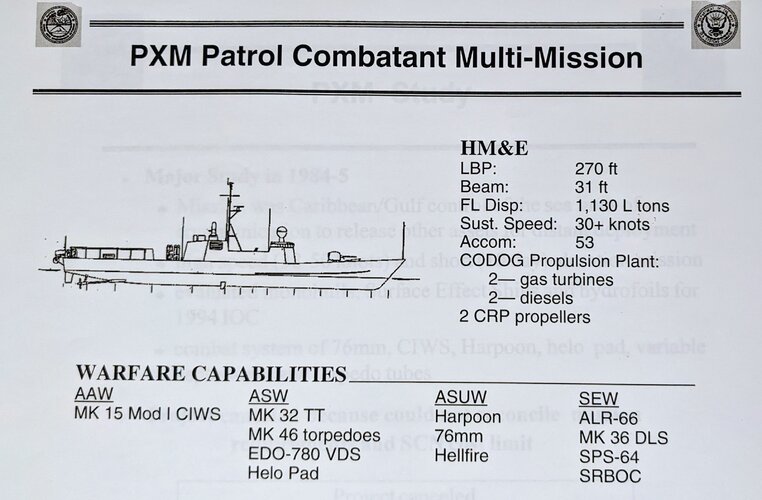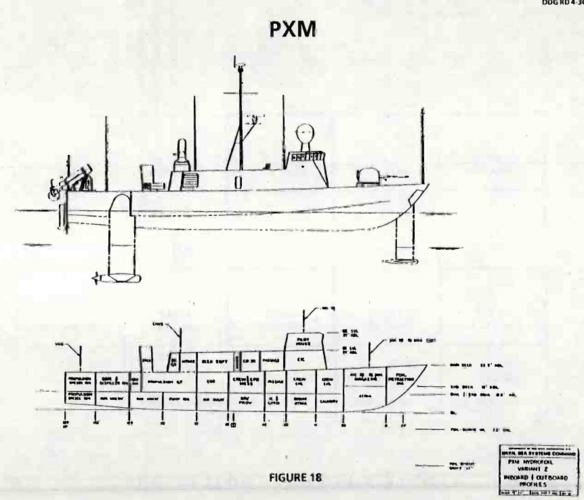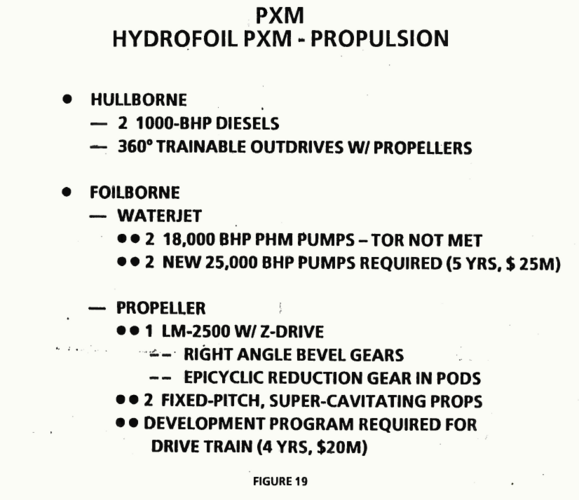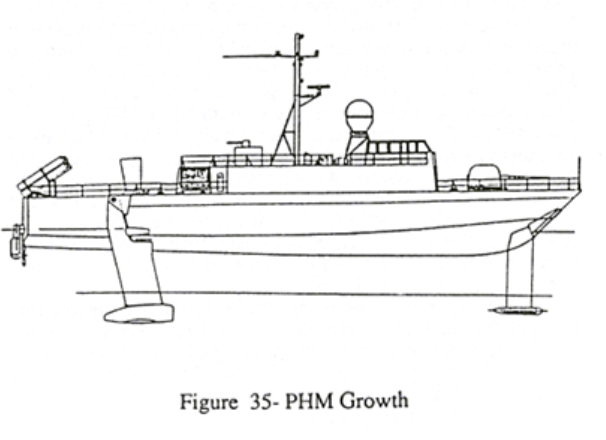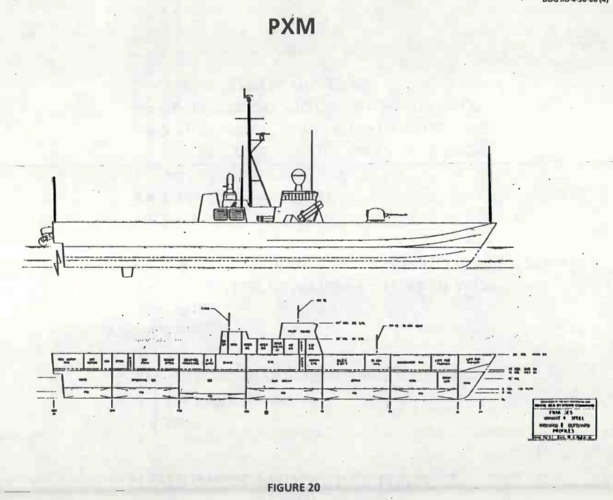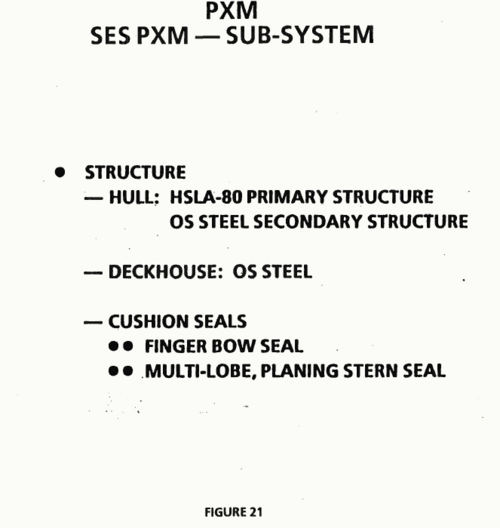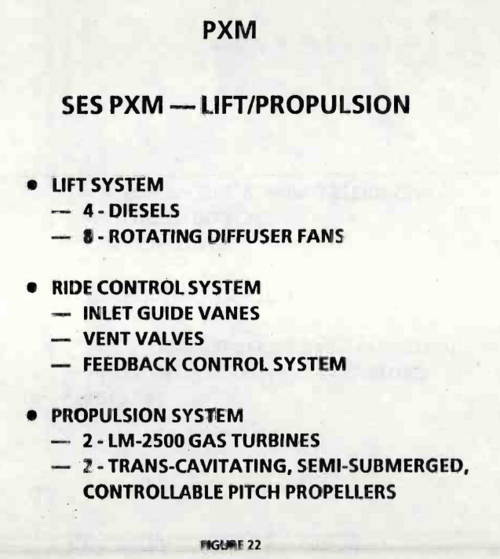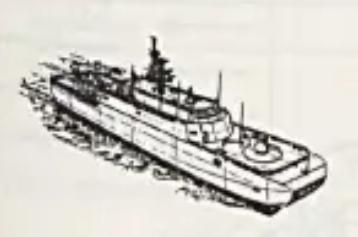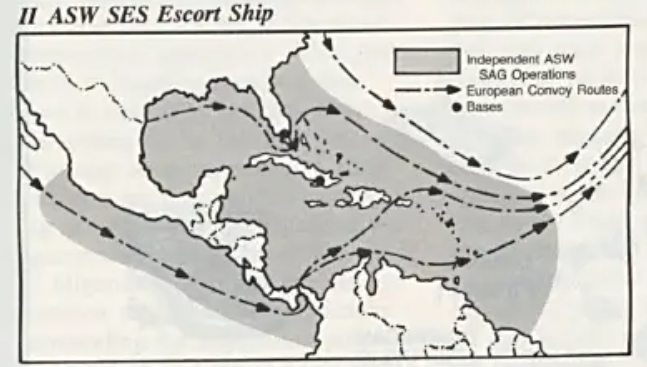- Joined
- 16 April 2008
- Messages
- 8,398
- Reaction score
- 10,365
A few months ago, I posted a thread on a briefing with several more or less obscure frigate concepts for the USN. One of the designs included in that brief is the PXM, which I described at the time as a rabbit hole. This thread is my attempt to chase that rabbit as far as I can go, starting from that brief:
https://www.secretprojects.co.uk/threads/obscure-usn-frigate-concepts-and-studies.39022/post-522529
PXM began in 1984 as a CONFORM study for a lower-cost platform to conduct ASuW and ASW in the Caribbean area, freeing up frigates that were ordinarily tasked with these missions and supplementing the PHMs that were assigned to ASuW in the region. It started life as a Boeing proposal for an enlarged hydrofoil (see below) as a direct successor to the PHMs but when CONFORM took over PXM became a vehicle to study a range of Advanced Marine Vehicle concepts and different combat systems.

In October 1985, the director of Surface Warfare (Admiral Walsh) wrote about PXM and gave a general description of the proposed armament, along with a somewhat fanciful sketch of an SES variant with all these features.:
I think Walsh is mixing and matching elements from several variants and hullforms – his description doesn’t match any specific version of PXM studied by CONFORM. This ship is said to be 600-800 tons with a crew of 35, consistent with the hydrofoils rather than the SES configuration shown in the sketch. But OPNAV Surface Warfare Division clearly preferred SES over hydrofoils at this time. This issue of Proceedings included an article on AMV designs for essentially a whole fleet up to and including an SES AOE supporting squadrons of PHMs.

(Source: USNI Proceedings, Modern Ships and Craft, October 1985) https://www.usni.org/magazines/proceedings/1985/october/modern-ships-and-craft )
CONFORM eventually considered a dozen alternatives: four combat system variants, each on three separate hullforms – monohull, hydrofoil, and surface effect ship [SES]. Five of these got singled out for more detailed feasibility studies (the versions with the darker outlines in the matrix below). This chart comes from a May 1986 report to the NATO Naval Armaments Group Special Working group 6 (which was concerned with AMVs). By this point, PXM had transitioned from CONFORM to a potential acquisition program.

We do not have full details on all four combat system variants, but we can make some educated guesses based on the drawings in the following posts:
Source: https://repository.tudelft.nl/islan...bd7-9e22-c46f7b17af65/datastream/OBJ/download
Friedman give some additional data on the five feasibility study variants, but some of it seems to have been mangled in the process of getting it into his book. For example, he gives a draft for the Variant 2 SES as 16 feet, while the Variant 4 SES has a draft of 4.4 feet on cushion and 12 feet off cushion. Since the measurements for these two variants are almost identical otherwise, I think someone accidentally added 4 and 12 to get 16. Likewise, the Variant 2 monohull has a draft of 19 feet, while the Variant 4 drops to 10 feet. I suspect a typo—either 19 or 20 feet makes sense and would be an off-by-one typo.
[Side note, some sources also refer to this as PCM. I think PXM was more official, but PCM is probably more accurate – this was basically a missile-armed submarine chaser for the modern era.]
https://www.secretprojects.co.uk/threads/obscure-usn-frigate-concepts-and-studies.39022/post-522529
PXM began in 1984 as a CONFORM study for a lower-cost platform to conduct ASuW and ASW in the Caribbean area, freeing up frigates that were ordinarily tasked with these missions and supplementing the PHMs that were assigned to ASuW in the region. It started life as a Boeing proposal for an enlarged hydrofoil (see below) as a direct successor to the PHMs but when CONFORM took over PXM became a vehicle to study a range of Advanced Marine Vehicle concepts and different combat systems.
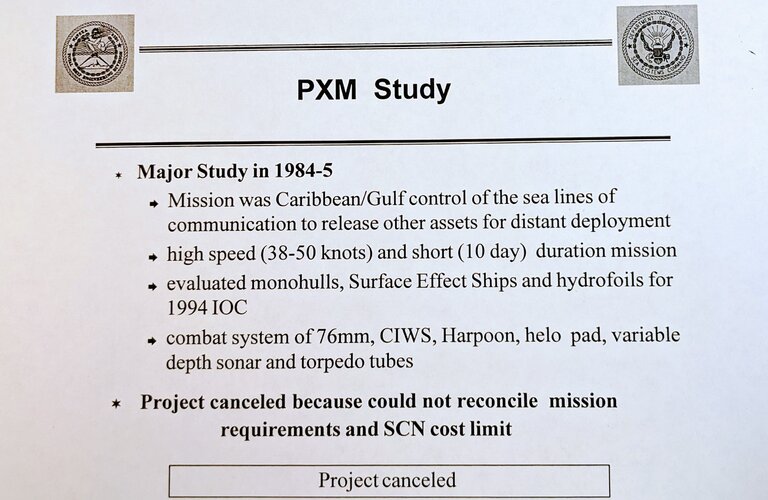
In October 1985, the director of Surface Warfare (Admiral Walsh) wrote about PXM and gave a general description of the proposed armament, along with a somewhat fanciful sketch of an SES variant with all these features.:
The PXM will possess armament and speed equivalent to the PHM’s and will have an antisubmarine warfare (ASW) capability. New concepts under consideration in this effort are the use of the AQS-13F helo-dipping sonar, a thin-line towed array, and replacing the gun with an extended-range Hellfire missile (laser designated, first round on target, 95-pound tank killer). The PXM will have a flight deck for an ASW helicopter and possibly an aerostat for sonobuoy monitoring. Signature reduction in all five areas—radar cross section, electronic emissions, infrared, acoustic, and wake—will be a prime consideration as the design futures. We expect to fit all of this in a patrol craft of 600-800 tons and man it with a crew of about 35. The result will be a lowered life-cycle cost.
I think Walsh is mixing and matching elements from several variants and hullforms – his description doesn’t match any specific version of PXM studied by CONFORM. This ship is said to be 600-800 tons with a crew of 35, consistent with the hydrofoils rather than the SES configuration shown in the sketch. But OPNAV Surface Warfare Division clearly preferred SES over hydrofoils at this time. This issue of Proceedings included an article on AMV designs for essentially a whole fleet up to and including an SES AOE supporting squadrons of PHMs.
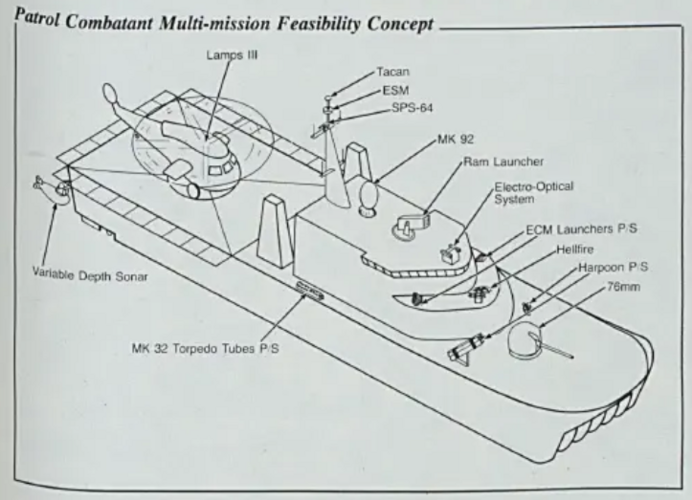
(Source: USNI Proceedings, Modern Ships and Craft, October 1985) https://www.usni.org/magazines/proceedings/1985/october/modern-ships-and-craft )
CONFORM eventually considered a dozen alternatives: four combat system variants, each on three separate hullforms – monohull, hydrofoil, and surface effect ship [SES]. Five of these got singled out for more detailed feasibility studies (the versions with the darker outlines in the matrix below). This chart comes from a May 1986 report to the NATO Naval Armaments Group Special Working group 6 (which was concerned with AMVs). By this point, PXM had transitioned from CONFORM to a potential acquisition program.
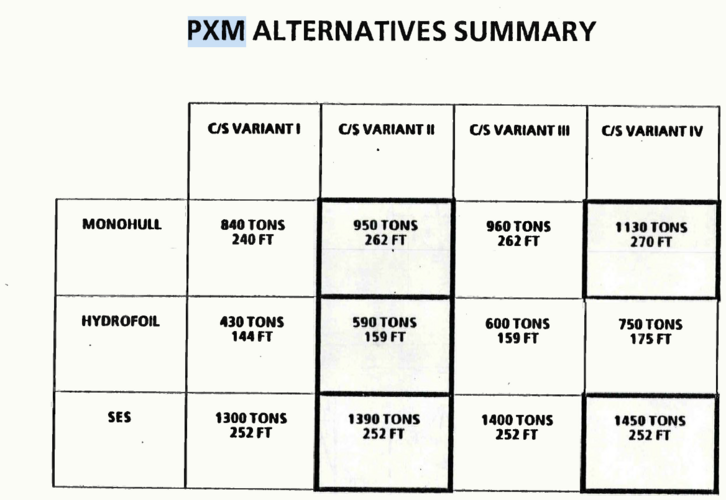
We do not have full details on all four combat system variants, but we can make some educated guesses based on the drawings in the following posts:
- Variant 1 was the least capable and may have been the version using AQS-13F dipping sonar instead of the VDS in the larger versions. I’d guess the other armament is the same as Variant 2.
- Variant 2 evidently had 2x4 Harpoon, 2x3 Mk32 torpedo tubes, a variable depth sonar, Phalanx, a 76mm gun, and a Mk 92 fire control ball.
- Variant 3 is a blank spot. It was similar in size to Variant 2, so I’d guess it had some variation of sensors (possibly the towed array instead of VDS?). But that’s just a guess.
- Variant 4 was essentially Variant 2 plus a helicopter pad (probably with refueling and rearming capability).
Source: https://repository.tudelft.nl/islan...bd7-9e22-c46f7b17af65/datastream/OBJ/download
Friedman give some additional data on the five feasibility study variants, but some of it seems to have been mangled in the process of getting it into his book. For example, he gives a draft for the Variant 2 SES as 16 feet, while the Variant 4 SES has a draft of 4.4 feet on cushion and 12 feet off cushion. Since the measurements for these two variants are almost identical otherwise, I think someone accidentally added 4 and 12 to get 16. Likewise, the Variant 2 monohull has a draft of 19 feet, while the Variant 4 drops to 10 feet. I suspect a typo—either 19 or 20 feet makes sense and would be an off-by-one typo.
Variant 2 | | Variant 4 | ||||
Monohull | SES | Hydrofoil | Monohull | SES | ||
| Cost (millions) | $255 | $295 | $315 | $265 | $300 | |
| Displacement (tons) | 950 | 1390 | 590 | 1130 | 1450 | |
| Length (feet) | ||||||
| WL | 262.4 | 252 | 159 | 270 | 252.2 | |
| OA | 275 | 262 | 175 | 285 | 262 | |
| Beam (feet) | ||||||
| WL | 29.5 | 60.4 | 34.6 | 31 | 60.4 | |
| Extreme | 36.5 | 64 | 38 | 64 | ||
| Draft (feet) | 19 | 16 | 18.4 | 10 | 4.4 (on cushion)/ 12 (displacement) | |
| Complement | 35 | 36 | 35 | 45 | 47 |
[Side note, some sources also refer to this as PCM. I think PXM was more official, but PCM is probably more accurate – this was basically a missile-armed submarine chaser for the modern era.]
Last edited:

